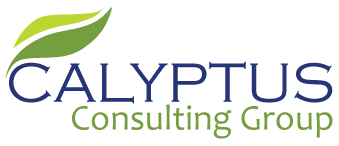Transit Asset Management
Qualifications & Approach
Calyptus TAM qualifications:
Few firms have the requisite knowledge and skills within their existing organization to perform TAM consulting services. Yet, Calyptus’ experience and working relationships with the FTA put us in a unique position to support recipients in achieving compliance in this new area. A holistic capability is needed to encompass the engineering, grants management, capital planning, maintenance, systems, and procurement aspects of the TAM Plan.
As an FTA reviewer, Calyptus is tasked with conducting initial and enhanced reviews and providing technical assistance where needed. Every review involves evaluating the grantee’s asset management, satisfactory continuing control of FTA-funded assets and vehicles and facilities/equipment for compliance with FTA regulations, and may require enhanced reviews. To date, Calyptus has conducted over 240 Triennial Reviews. Since the last FTA Triennial Review cycle, Calyptus conducted fourteen (14) enhanced Maintenance reviews and maintenance/asset management technical assistance for two (2) additional grantees.
Calyptus has also developed specialized asset management training, which has been delivered to several public and private sector clients, including the World Bank, the Foxboro Co., Energizer, MWRA, Otis Elevator Company, and Pratt & Whitney. The asset management training created for the World Bank was a step-by-step guide to their asset management plans across 162 offices worldwide, including roles, responsibilities, and the reporting structure. This training was available in person or via the online eLearning platform. Calyptus is also providing these options to the Pace TAM task force and to HART. The process and tools for developing the training will be essential for drafting and delivering the TAM Plan ‘how-to’ guide to the internal TAM task force following the gap analysis.
Calyptus tam approach:
Calyptus takes a holistic approach to completing TAM Plans, which FTA recipients must now submit by October 1, 2018. TAM is a management system aimed at tracking, evaluating, planning, and improving fixed assets funded by the FTA. FTA has articulated the specific requirements of TAM in a series of publications and guidance documents, which form the foundation of the project approach.
Our approach includes the following:
Assess the current asset management program
Conduct best practices research and gap analysis to frame a comprehensive implementation plan
Determine agency goals and TAM initiatives
Recommend a TAM framework for performance measurement
Identify the optimal IT system solution
Build investment plans and strategies
Specify a TAM framework that includes the nine aspects of a TAM plan as specified by FTA and integrates applicable best practices related to asset inventory practices, condition assessments, prioritization of investment, target setting, useful life benchmarking, risk management, roles and responsibilities, and reporting.
Finalize the asset inventory and plan
Conduct training of staff and provide technology transfer of skills
Annually update the plan to meet FTA, NTD, and the MTC reporting requirements

